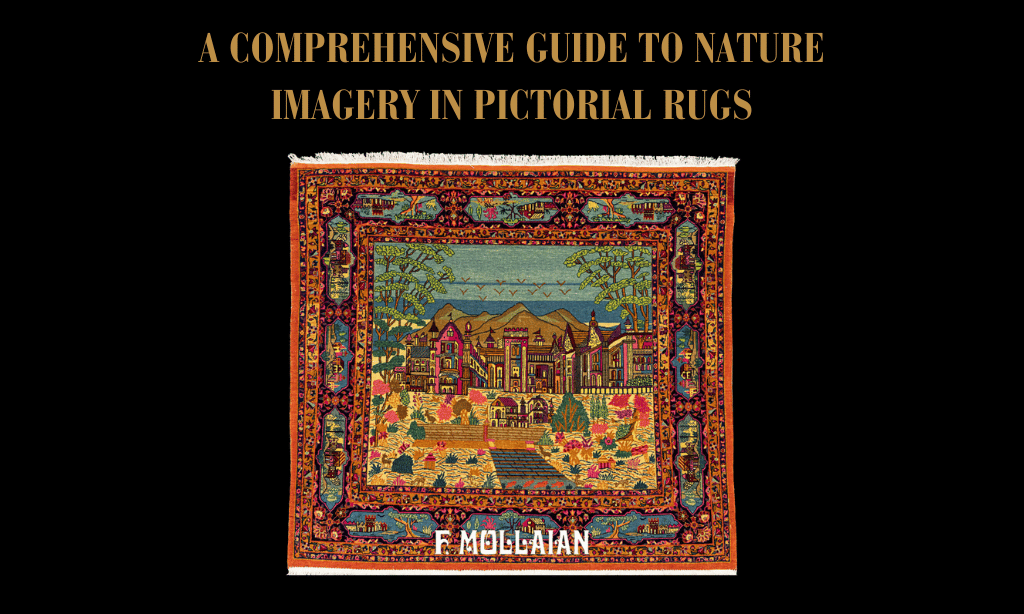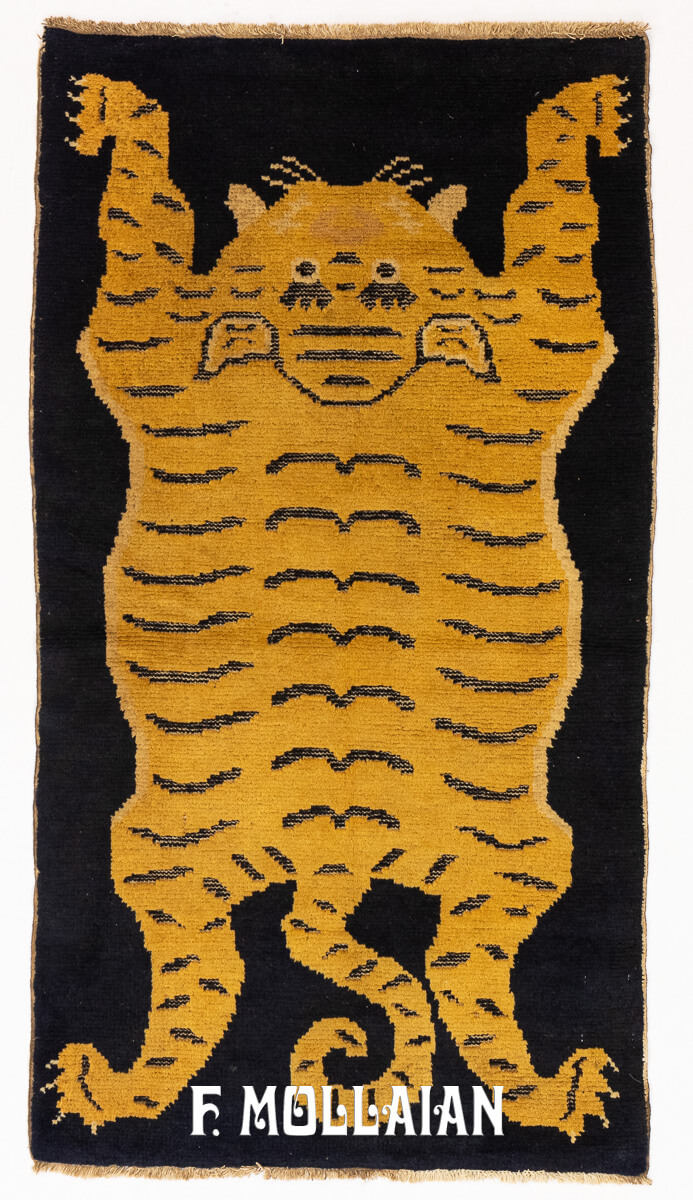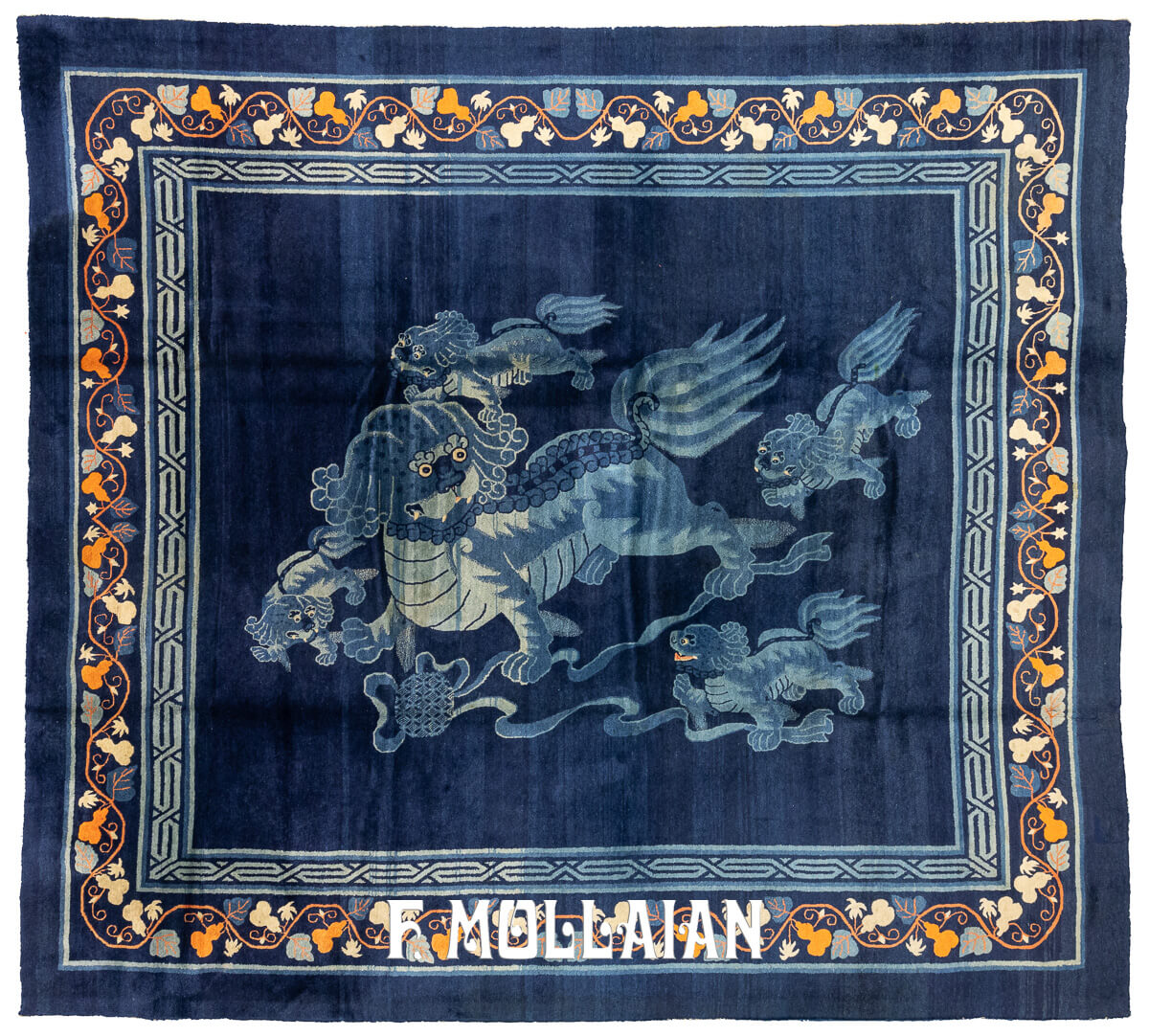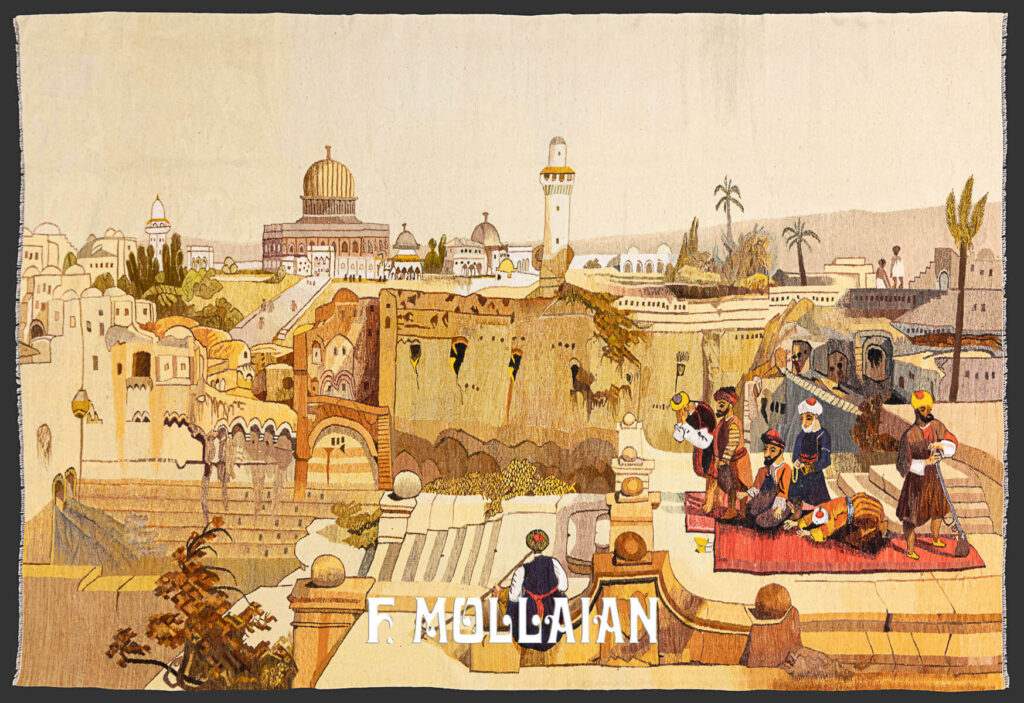A Comprehensive Guide to Nature Imagery in Pictorial Rugs
Imagine stepping into a room where the floor tells a story. That’s the magic of pictorial rugs. These artistic marvels, like the Antique Tibetan “Tiger” Rug or the Salvador Dali European Carpet, transform spaces with their intricate designs. Nature imagery plays a crucial role in textile art, capturing the essence of the outdoors within your home. From the Antique Tapestry Figurative Design Beige Color to the Antique Peking Carpet Foo Dog Blue Field Color, each piece offers a glimpse into the beauty of nature. This guide helps you explore the world of pictorial rugs nature imagery, including treasures like the Antique Pictorial Chinese Wool Rug.
Understanding Pictorial Rugs
Definition and Characteristics
What are pictorial rugs?
Pictorial rugs are more than just floor coverings. They are artistic expressions that tell stories through intricate designs. Imagine the Antique Tibetan “Tiger” Rug, where every thread weaves a tale of nature and culture. These rugs often depict scenes from life, nature, or mythology, transforming any space into a visual narrative.
Key features and styles
Pictorial rugs boast unique features. They often include detailed imagery, vibrant colors, and complex patterns. Styles vary widely, from the Antique Tapestry Figurative Design Beige Color to the Antique Pictorial Chinese Wool Rug. Each style reflects the weaver’s cultural background and artistic vision, making these rugs not only decorative but also deeply meaningful.
Historical Context
Origins and evolution
The history of pictorial rugs is rich and fascinating. These rugs have evolved over centuries, showcasing the artistry and talent of their creators. The Antique Tibetan “Tiger” Rug, for example, pays homage to historical events and figures. Pictorial rugs have always been a testament to the weaver’s skill and creativity.
Influence of different cultures
Different cultures have left their mark on pictorial rugs. From the intricate designs of the Antique Tapestry Figurative Design Beige Color to the symbolic motifs in the Antique Pictorial Chinese Wool Rug, each piece reflects its cultural origins. These rugs often incorporate symbols of protection, fertility, or prosperity, serving as a visual language that tells stories about the weaver’s environment and beliefs.
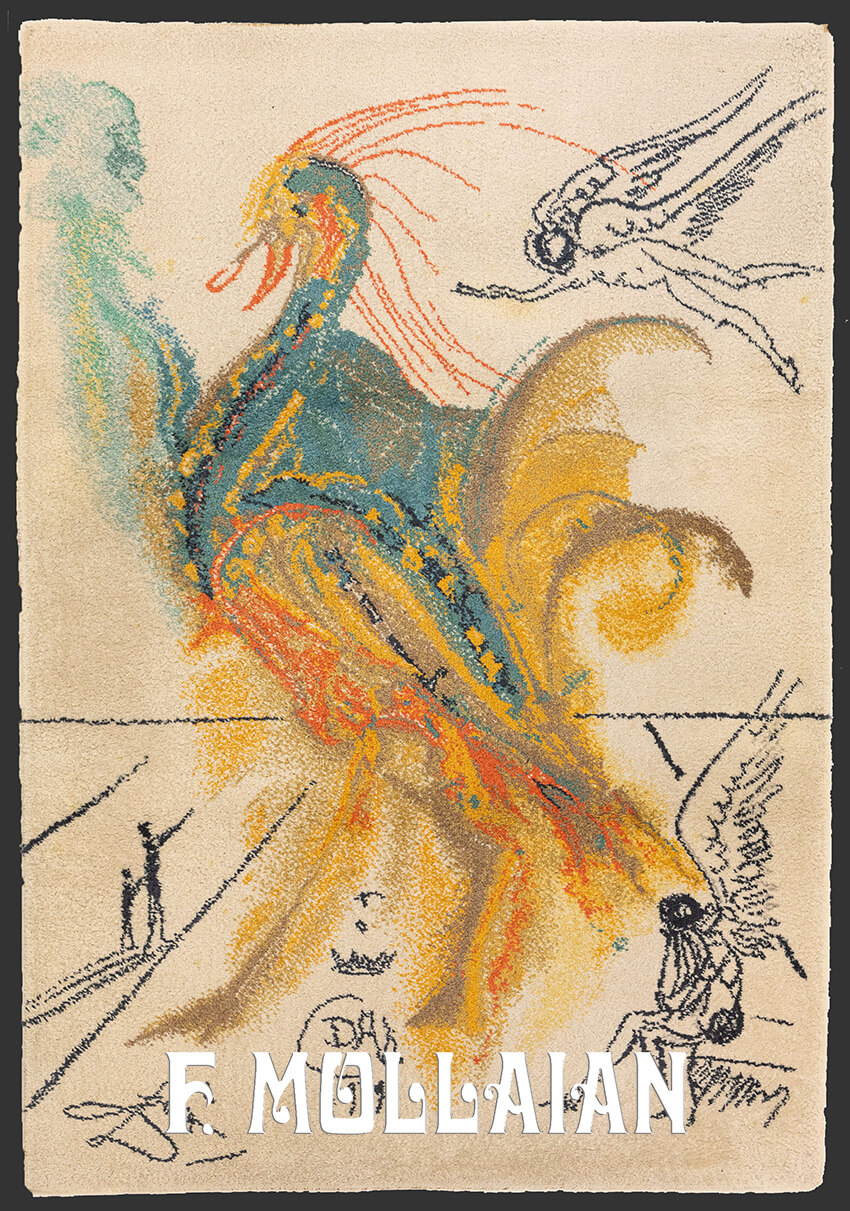
This Salvador Dalí European Carpet is a stunning artistic piece that brings surrealist art into the home. Inspired by Dalí’s iconic and dreamlike imagery, the rug features a vibrant and fluid depiction of a fantastical bird in motion, surrounded by abstract figures and surreal elements. With bold splashes of color—reds, yellows, and blues—the design evokes a sense of imagination and creativity, capturing Dalí’s unmistakable style. The wool rug serves as both a functional floor covering and an artistic statement, making it a perfect addition for collectors or those looking to infuse their living space with avant-garde, artistic flair.
Nature Imagery in Pictorial Rugs
Common Natural Themes
Flora and fauna
When you explore pictorial rugs, you’ll often find the beauty of flora and fauna woven into their designs. These rugs capture the essence of nature, bringing vibrant flowers and majestic animals into your home. Imagine a rug where every petal and leaf tells a story, much like the intricate designs found in Farzin Mollaian’s collection. The use of natural dyes enhances these images, creating a vivid tapestry that reflects the weaver’s connection to the environment.
Landscapes and seascapes
Pictorial rugs often depict breathtaking landscapes and serene seascapes. These scenes transport you to distant places, allowing you to experience the tranquility of nature from the comfort of your living room. Whether it’s the rolling hills or the gentle waves, these rugs offer a window into the natural world. The artistry involved in capturing these scenes is a testament to the skill and creativity of the weavers, who transform threads into lifelike vistas.
Symbolism and Meaning
Cultural interpretations
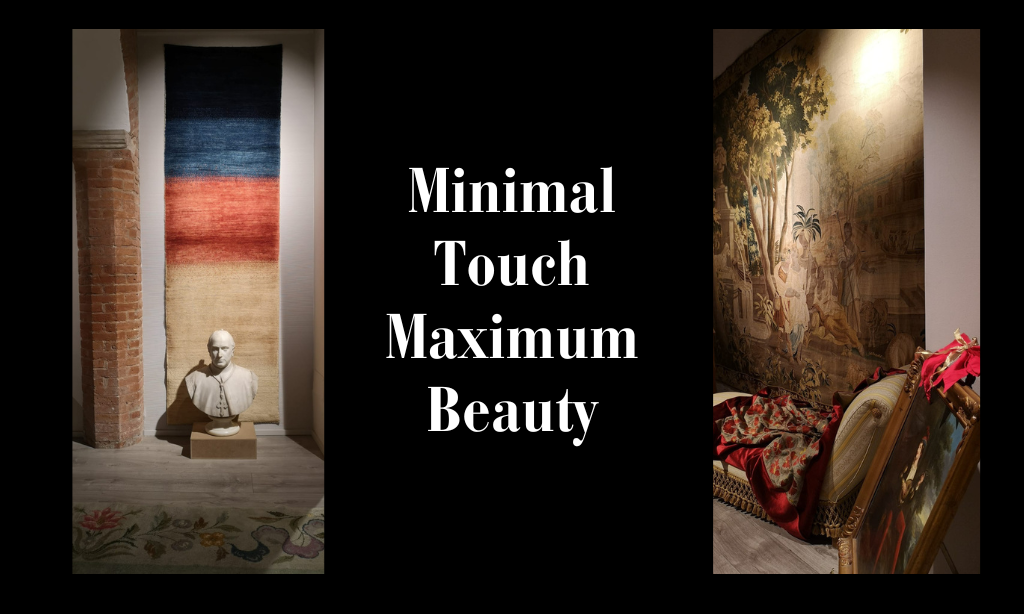
Nature imagery in pictorial rugs carries deep cultural meanings. Each motif and pattern reflects the traditions and beliefs of the weaver’s culture. For example, the geometric patterns in tribal rugs symbolize elements of daily life and nature. These symbols convey stories and blessings, enriching the rug with layers of meaning. When you choose a rug, you’re not just selecting a piece of decor; you’re embracing a piece of cultural heritage.
Symbolic significance of nature elements
The elements of nature depicted in these rugs often hold symbolic significance. Flowers might represent growth and renewal, while animals could symbolize strength or protection. In Farzin Mollaian’s collection, each rug undergoes careful evaluation to ensure it embodies these rich narratives. By incorporating these elements into your space, you invite the stories and traditions of diverse cultures into your home, creating a unique and meaningful atmosphere.
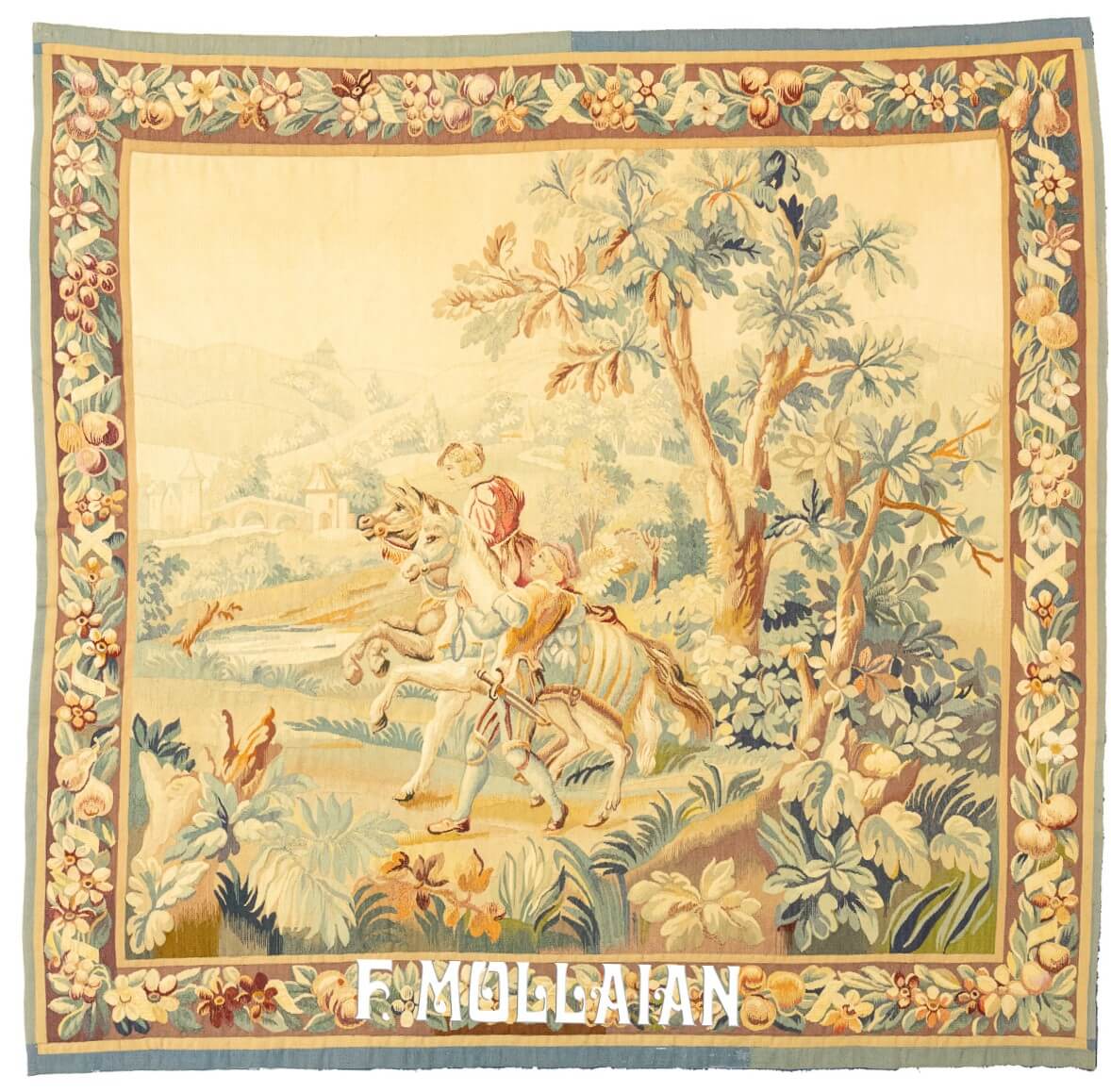
This Antique Figurative Tapestry is a beautifully crafted textile featuring an intricate pastoral scene in soft beige tones, accented with vibrant greens and blues. The tapestry depicts a noble rider on horseback, surrounded by lush vegetation and scenic hills in the background, embodying a sense of idyllic rural life. The border is richly adorned with floral motifs, adding to its decorative appeal. Handwoven with meticulous attention to detail, this tapestry not only serves as an exquisite wall hanging but also adds a touch of history and elegance to any space. Its timeless design makes it perfect for traditional or classical interiors.
Techniques and Materials
Weaving Techniques
Traditional methods
When you delve into the world of pictorial rugs, you’ll discover a rich tapestry of traditional weaving techniques. These methods have been passed down through generations, preserving the cultural heritage and authenticity of handwoven textiles. Imagine the intricate craftsmanship involved in creating an Antique Tapestry Figurative Design Beige Color. Each thread is meticulously placed, reflecting the weaver’s skill and dedication. Traditional techniques often involve hand-knotting, where artisans tie each knot by hand, ensuring durability and precision. This method not only enhances the rug’s longevity but also adds a personal touch, making each piece unique.
Modern innovations
While traditional methods hold a special place in rug-making, modern innovations have also made their mark. Advances in technology have introduced new tools and techniques, allowing for more intricate designs and faster production. For instance, the Antique Pictorial Chinese Wool Rug showcases how modern innovations can blend with traditional artistry. Weavers now use looms that enable them to create complex patterns with greater ease. These innovations have expanded the possibilities for design, offering you a wider range of styles to choose from. However, the essence of craftsmanship remains, ensuring that each rug retains its artistic value.
Materials Used
Natural fibers
The choice of materials plays a crucial role in the quality and feel of a pictorial rug. Natural fibers, such as wool, silk, and cotton, are commonly used due to their durability and aesthetic appeal. The Antique Tapestry Figurative Design Beige Color, for example, often features wool, which provides warmth and resilience. Wool’s natural elasticity allows it to withstand wear and tear, making it an ideal choice for high-traffic areas. Silk, on the other hand, adds a luxurious sheen and softness, perfect for creating intricate details in designs like the Antique Pictorial Chinese Wool Rug. These natural fibers not only enhance the rug’s beauty but also connect you to the earth, bringing a touch of nature into your home.
Dyes and color palettes
Color plays a vital role in the allure of pictorial rugs. Artisans use natural dyes derived from plants, minerals, and insects to create vibrant and lasting hues. The Antique Tapestry Figurative Design Beige Color often features a palette that reflects the natural world, with earthy tones and subtle contrasts. These dyes not only provide rich colors but also ensure that the rug ages gracefully, maintaining its beauty over time. The Antique Pictorial Chinese Wool Rug, with its vivid imagery, exemplifies how color can transform a simple rug into a work of art. By choosing a rug with a carefully curated color palette, you can enhance your space’s ambiance and create a harmonious environment.
Cultural Significance (Tree of the life)
Regional Variations
Middle Eastern influences
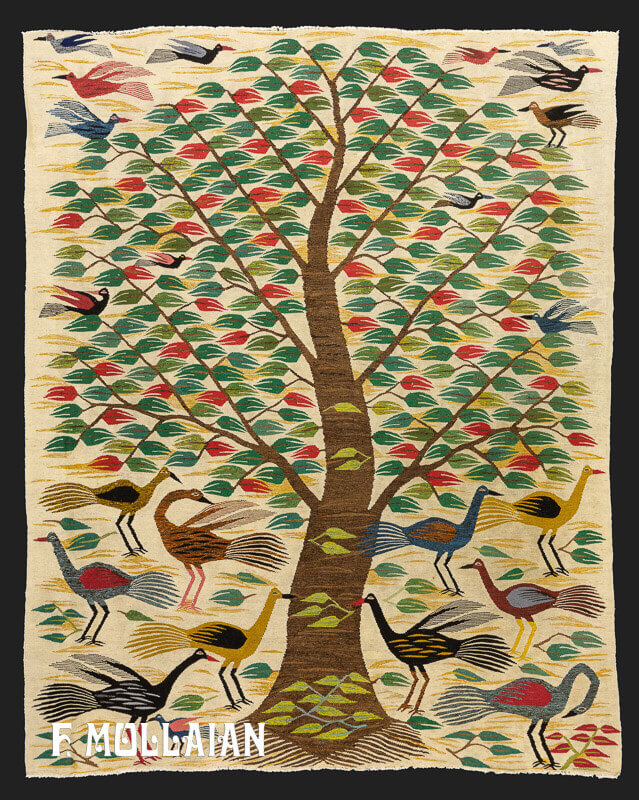
This vibrant Egyptian Kilim, measuring 236 x 178 cm (7′ 8″ x 5′ 10″), captures the timeless allure of folk art with a charming Tree of Life motif. Handwoven with exquisite craftsmanship, this kilim showcases a central tree, whose branches are adorned with colorful leaves in shades of green, red, and yellow. Birds, each with unique colors and postures, are depicted resting on branches or standing beneath the tree, adding a delightful sense of life and movement to the design. The tree, symbolizing growth, connection, and continuity, is a traditional motif in Egyptian and Middle Eastern textile art. This piece’s balanced composition and earthy color palette make it suitable for a wide range of decor styles, from rustic and bohemian to contemporary settings. Its flat weave structure, characteristic of kilims, ensures durability and makes it ideal as a decorative wall hanging or as a floor covering that can withstand regular use. Made with natural dyes and quality wool, this kilim is not only a decorative piece but also a representation of cultural heritage. Its bright colors and lively design bring a fresh, organic element into any room, evoking a connection to nature and tradition.
When you think of pictorial rugs, Middle Eastern influences often come to mind. These rugs, like the Antique Tibetan “Tiger” Rug, showcase intricate designs and vibrant colors that reflect the rich cultural heritage of the region. Persian rugs, for example, are renowned for their luxurious pile and elaborate patterns. They often feature motifs that symbolize protection, fertility, or prosperity. The artistry involved in creating these rugs is a testament to the weaver’s skill and creativity. Each piece tells a story, offering a glimpse into the traditions and beliefs of the culture it represents.
Asian and European styles
Asian and European styles also play a significant rcole in the world of pictorial rugs. The Antique Peking Carpet Foo Dog Blue Field Color, for instance, embodies the elegance and sophistication of Asian design. These rugs often incorporate symbolic motifs and intricate patterns that reflect the weaver’s environment and philosophies. European styles, on the other hand, are characterized by their attention to detail and use of luxurious materials. The Salvador Dali European Carpet is a perfect example of how European artistry can transform a simple rug into a work of art. These rugs not only serve as decorative pieces but also as cultural artifacts that preserve the heritage of their respective regions.
Role in Cultural Identity
Storytelling through rugs
Pictorial rugs have long served as a medium for storytelling. Native American Navajo tribes, for example, weave rugs with distinct geometric patterns and vibrant colors that tell stories or depict important cultural symbols and ceremonies. The Antique Tibetan “Tiger” Rug is another example of how rugs can convey narratives through their designs. Each motif and pattern reflects the weaver’s cultural background and artistic vision, making these rugs not only decorative but also deeply meaningful. By incorporating these elements into your space, you invite the stories and traditions of diverse cultures into your home.
Preservation of heritage
Rugs like the Antique Peking Carpet Foo Dog Blue Field Color and the Salvador Dali European Carpet play a crucial role in preserving cultural heritage. They serve as tangible reminders of the past, capturing the essence of the weaver’s environment and beliefs. Ancient rugs, initially created for practical uses by nomadic tribes, have evolved into canvases for artistic expression. They incorporate elaborate designs and colors that go beyond their utilitarian origins, becoming an integral part of cultural expression and heritage. By choosing a rug from Farzin Mollaian’s collection, you not only enhance your space’s ambiance but also contribute to the preservation of these rich cultural traditions.
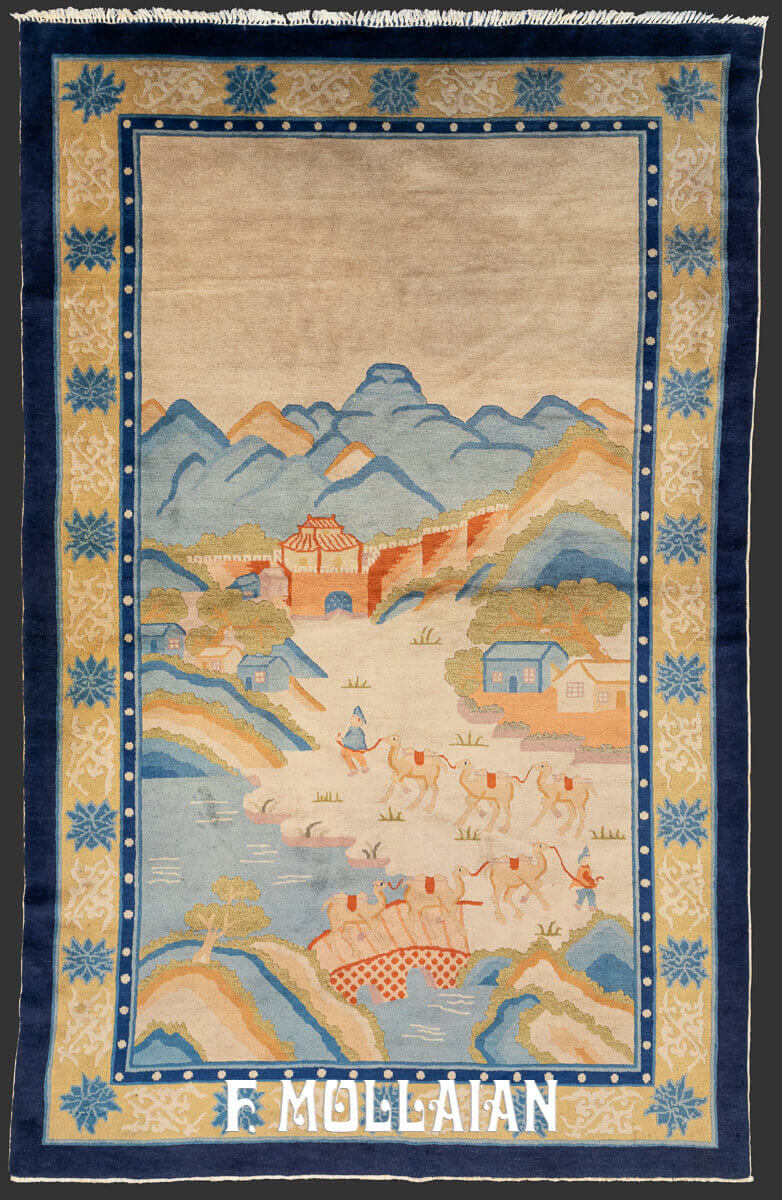
This Antique Hand-Knotted Pictorial Chinese Peking Rug features a beautifully detailed landscape scene, depicting a traditional Chinese village with the Great Wall and mountains in the background. The focal point of the design is a caravan of camels led by a figure, crossing a bridge over a river, showcasing a slice of pastoral life. The rug is bordered by a decorative frame of intricate floral and geometric patterns in gold and blue tones, adding a layer of elegance to the already captivating scene. Handwoven from wool, this rug reflects classic Chinese craftsmanship and storytelling, making it a unique piece for those who appreciate cultural and artistic history.
Practical Applications
Interior Design
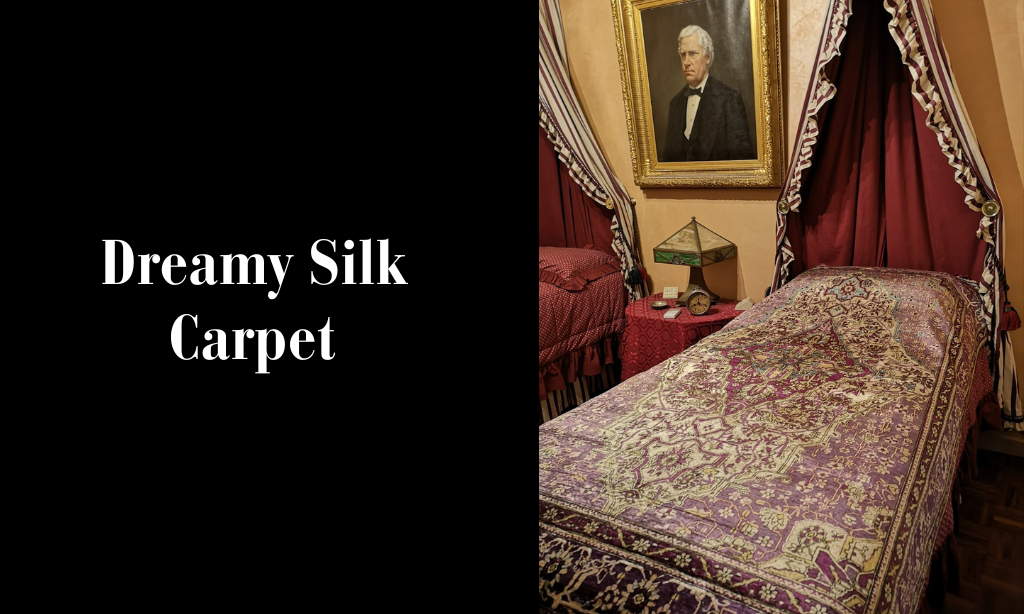
Incorporating pictorial rugs in modern decor
Pictorial rugs can transform your living space into a vibrant and personalized environment. Imagine the Salvador Dali European Carpet as the centerpiece of your room. Its intricate design and bold colors draw attention, making it a focal point. You can use these rugs to express your unique style. Whether you love nature scenes or abstract art, there’s a rug that reflects your personality.
Tips for selecting the right rug
Choosing the perfect rug involves considering several factors. First, think about the size of your space. A large rug like the Antique Peking Carpet Foo Dog Blue Field Color can anchor a room, while smaller rugs add accents. Next, match the rug’s color palette with your existing decor. This ensures harmony and balance. Finally, consider the rug’s theme. A nature-inspired design can bring tranquility, while a bold pattern adds energy.
Collecting and Preserving
How to start a collection
Starting a rug collection can be an exciting journey. Begin by exploring different styles and periods. The Salvador Dali European Carpet offers a glimpse into European artistry, while the Antique Peking Carpet Foo Dog Blue Field Color showcases Asian elegance. Visit galleries or consult experts like Farzin Mollaian to understand the history and craftsmanship behind each piece. Building a collection is about finding pieces that resonate with you.
Care and maintenance tips
Proper care ensures your rugs remain beautiful for years. Regular vacuuming prevents dirt buildup. Rotate your rugs to avoid uneven wear. For spills, blot immediately with a clean cloth. Avoid harsh chemicals. Professional cleaning every few years helps maintain their vibrancy. With the right care, your Salvador Dali European Carpet or Antique Peking Carpet Foo Dog Blue Field Color will continue to enchant and inspire.
Nature imagery in pictorial rugs offers a unique blend of art and storytelling. These rugs, like those from Farzin Mollaian’s collection, capture the beauty of the natural world and cultural narratives. By exploring this art form, you embrace a piece of history and creativity. Each rug tells a story, reflecting the weaver’s vision and cultural heritage. Dive into this world and discover the artistic and cultural value these masterpieces bring to your space. Let them inspire and transform your home with their timeless beauty.

